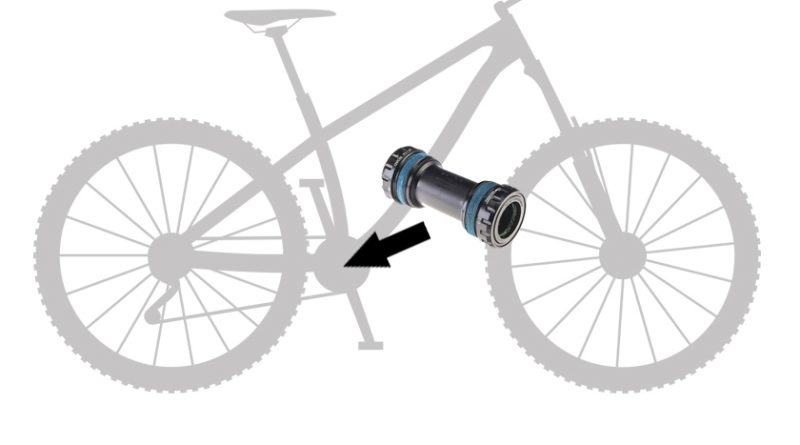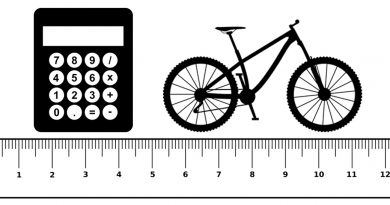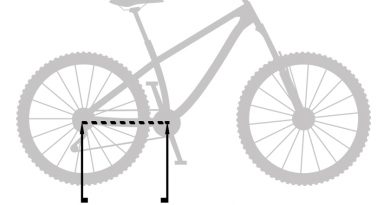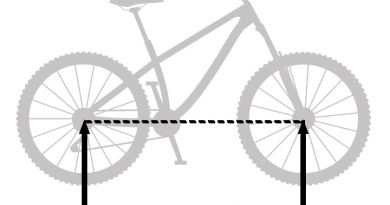What Is A Bottom Bracket On A Bike? (Explained)
Over time your bike may start to develop noise when you start to pedal, or even start to wobble. This could likely mean the bottom bracket needs replacing. We explain what a bottom bracket is and where to find it, how to know if it needs replacing and then guide you through the types of bottom bracket you will need to replace it.
- What Is A Bottom Bracket On A Bike?
- What Do Bottom Brackets Do?
- What are the Main Types of Bottom Brackets?
- How Do I Know What Bottom Bracket Fits My Bike?
- Do All Cranks Fit All Bottom Brackets?
- How Long Does A Bottom Bracket Last?
- What Is a Hollowtech Bottom Bracket?
- Do Bottom Brackets Wear Out?
- How Do I Know If My Bottom Bracket Needs Replacing?
- How Much Does It Cost To Replace a Bottom Bracket?
- Are Shimano Bottom Brackets Interchangeable?
- What is an External Bottom Bracket?
- What is an Internal Bottom Bracket?
What Is A Bottom Bracket On A Bike?
The bottom bracket of a bike is the hollow circle at the bottom that the cranks attach to. An axle goes through it, which turns a pair of bearings, one on each side of the bike, which allows you to pedal.
What Do Bottom Brackets Do?
Bottom brackets connect the crankset to the bike and allow the crankset to rotate. Put simply, a bottom bracket is the bearings between the frame and the cranks.
What are the Main Types of Bottom Brackets?
The two main types of bottom brackets are threaded bottom brackets and press-fit bottom brackets. However, there are a number of different options within each type:
Threaded Bottom Brackets

Threaded bottom brackets are comprised of a shell that has internal threads which are used to hold threaded parts in place. The frame shell can be directly threaded at the shell, or there can be an extra insert that has internal threads to it. There have been various threaded bottom bracket sizes over the years. The standard threaded bottom bracket utilizes various cups and spacers with a thread specification of 1.37″ X 24 threads per inch. This standard is commonly known as ENG, an abbreviation of English. Other names for the ENG standard are BSA (Birmingham Small Arms), BSC (British Standard Cycle), BC (a shortened name for BSC), ISO (International Standards Organization), British, and Euro.
There are also several less common threading standards.
- A larger threaded shell, with a 47mm diameter threading, is known as T47.
- On both ENG and T47, the non-drive side (that is, the left side) is right-hand threading, tightening clockwise. The drive side utilizes a left-hand thread, which tightens counterclockwise.
Press Fit Bottom Brackets

Press-fit shells do not have any internal threading, instead of using a simple bore system. The bearing cup is a tiny bit larger than the bore of the frame and is pressed into the shell. The pressure of this fit holds the bottom bracket in place. There are a number of standards for press-fit bottom brackets, and it can get somewhat confusing. This is because there are a number of different ways of measuring the bracket size. Some standards take the measurement from the diameter of the spindle. Others take their measurement from the shell width or the size of the bore. The frame shell bore diameter is the preferred system,
however, as it is the most important and the most consistent.
The most common types of press-fit bottom brackets are:
- The P41 standard has a 41mm inside diameter. It is also known as the BB86, BB89.5, BB92, BB107, BB121, BB132, PF24, and Shimano Press-Fit because it was Shimano who developed this standard.
- The P41 standard comes with a number of different bearing inside diameters, including 24mm, 28.99mm, 30mm, and 22/24.
- The P42 standard is available for 28.99mm, 24mm and 22/24, spindles. However, they all have a 42mm nominal press-fit dimension.
- The PF46 standard has a shell bore of 46mm. The shell widths can be anything from 68mm to 86mm. Adapters are used to fit different crank spindle sizes. This standard is also known as PF30, PF30A, PF30AI, BB386EVO, OSBB, BBRIGHT.
- The BB90 and BB95 standards are used by Trek bikes. The numbers relate to the shell width. Built into the shell is an internal bearing retainer. The outside diameters of the bearings are 37mm.
How Do I Know What Bottom Bracket Fits My Bike?
You can find out what type of bottom bracket you need by first measuring the bottom bracket shell of your frame. You then need to identify what kind of bottom bracket you need for your bike. Sometimes it is easier to remove the cranks in order to do this. There are then a number of things to look for to determine what kind of bottom bracket you need.
How do I measure my bottom bracket shell?
Just take a tape measure and measure from the two outside points of the bottom bracket shell. see image below

Next, you need to work out which type of bottom bracket you need.
Press Fit:
- You will be able to see the cup containing the bearings pressed into the frame’s bottom bracket shell. These are normally only thin and can and be hard to see. There will be no external tool fittings visible.
Threaded:
You will be able to see external tool fittings that are used to remove these bottom brackets. Threaded bottom brackets can be split into three different categories.
- Cartridge: These are self-contained unit that has threaded ends.
- Cup and cone: These will have two tool fittings on the non-drive side. One of these is a notched lockring that is not a part of the cup. There are both round spindle styles and square spindle styles.
- External bearing: These are made up of a cup with a cartridge bearing. They are threaded into the bike frame.
- Thread together: This is similar in some ways to a press-fit system in that the two sides of the bottom bracket are pressed into the frame. However, the two pieces then thread together when they are pressed into the frame.
- One piece: These are easy to identify as removing the cranks also removes the bearings of the bottom bracket.
Do All Cranks Fit All Bottom Brackets?
No. Most cranksets can be fitted to quite a variety of bottom brackets within the same brand. Although it is not the case that all cranks can fit all bottom brackets, so it is important to check compatibility. The main variable to measure before getting a replacement is the size of the crank axle – (measure both the length and diameter). If You are looking for a replacement crank or bottom bracket, it might be a good idea to either order the same as you already have (brand/model are often printed)
How Long Does A Bottom Bracket Last?
A mountain bike’s bottom bracket should be good for around 2000 miles plus (if riding in the wet a lot, or doing lots of jumps, it may only do 10% of that)
A road bike’s bottom bracket should be good for around 5000 miles plus
However, there is no set answer to this question as it largely depends on the type of riding and how the bottom bracket is looked after. Proper servicing can vastly increase the life expectancy of bottom brackets. The quality of the product will also affect how long it lasts. But you should expect a good bottom bracket to last roughly two years.
What Is a Hollowtech Bottom Bracket?
Hollowtech bottom brackets are a standard that has been introduced by Shimano in 2003 on their XTR M960 groupset and is still commonly used today.
- Hollowtech cranks feature a hollow 24mm steel spindle which is fused onto the drive-side crank arm.
- The spindle has a splined design to accept the crank arm on the non-drive sidearm.
- The bearings of the bottom bracket are mounted in outboard cups. These are screwed into the threads of the bottom bracket shell.
- On the non-drive side, the crank arm is categorized as compression slotted, meaning that there is a slot and a compression cap that is used to pre-load the bearings. It does this by squeezing the crank arms together.
- This design has been so successful that it is held up as the standard by which most other cranks are judged and has been copied by many other manufacturers.
Do Bottom Brackets Wear Out?
Yes. This is because the main component of a bottom bracket is the bearings. The metal ball bearings slowly wear out from friction over time. This is why it’s important to keep a bottom bracket clean and well greased, which will help to reduce the amount of friction, thus making them last longer.
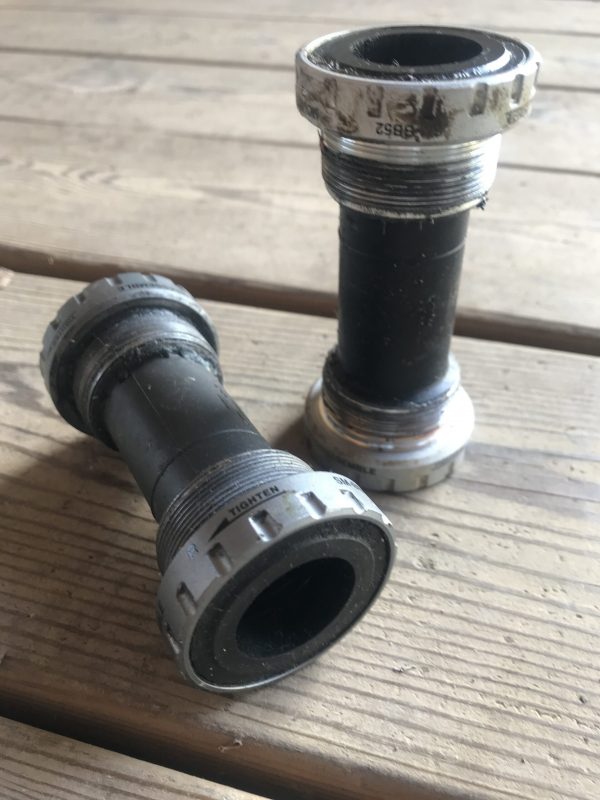
How Do I Know If My Bottom Bracket Needs Replacing?
You can generally tell if your bottom bracket needs replacing by if it feels rough, has sideways movement, or is making a loud sound.
- If there is lateral movement or “play” in the cranks, this is a sure sign that the bottom bracket needs replacing.
- If it feels rough when you pedal or grind, then it might need replacing.
- If it sounds rough, then it might need replacing.
- Take the chain off and spin the cranks to see how smoothly they move. If there is a feeling of roughness or grittiness, then this could be a sign that they need replacing.
How Much Does It Cost To Replace a Bottom Bracket?
A new bottom bracket can vary wildly in cost, from $15 all the way up to $250(£10-£180), so it largely depends on how much you are willing to pay. If you are willing to change it yourself, then that will be your only cost. However, if you want a shop to install it for you, then it should cost about $20-$30 (£15-20) in labour costs to fit it.
Are Shimano Bottom Brackets Interchangeable?
Most modern Shimano bottom brackets are interchangeable. They all feature the same 24mm diameter standard. Some of them require different-sized tools to remove them, but the tools are often supplied with the bottom bracket. However, if you have an older (pre2003) internal square taper bottom bracket It will not be interchangeable.
What is an External Bottom Bracket?
An external bottom bracket is one that features a cup with a cartridge bearing. The bearings can either be internal or external to the bottom bracket. The bottom bracket is then threaded into the frame of the bike.
What is an Internal Bottom Bracket?
An internal bottom bracket is one where the bearings are inside the bottom bracket.
Internal vs. External Bottom Brackets
- An external bottom bracket allows the bottom bracket to be run with larger bearings. This leads to increased longevity.
- It also means that the ride is smoother as there is room for more bearings.
- It also allows the spindle to be more rigid.
- External bottom Brackets, therefore, have less energy loss.
- However, external bottom brackets do stick out more, which can be an issue for some people.
- It can also lead to a slightly wider stance. Drag isn’t really an issue with mountain biking, however.
More of our resources you may find interesting:

